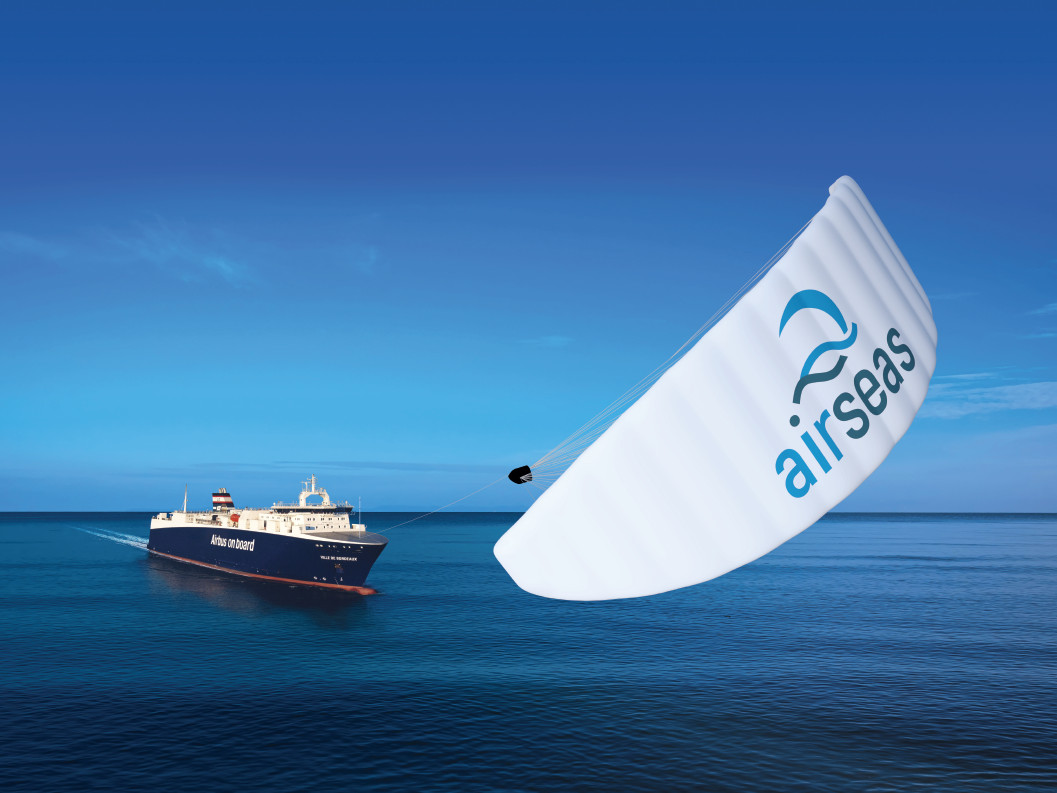
The shipping sector generates 2.3 million jobs in Europe and contributes to €145 billion of the EU’s Gross Domestic Product. Around 90% of the products consumed by European citizens are transported by ship, which makes the shipping sector one of the most significant sources of greenhouse gas (GHG) emissions. Being responsible of nearly 3% of the global worldwide emissions and about 13% of EU transport sector’s GHG emissions per year, the shipping sector is facing enourmous economic and environmental challenges.
The European Green Deal calls for a 90% reduction in greenhouse gas emissions from all modes of transport and this includes maritime transport. To reach the environmental objectives of the International Maritime Organisation (IMO) the support of green solutions to decarbonise the shipping sector based on renewable energies such as wind is the key.
The two-year project SEAWING4BLUE aims at maximising the power of wind through the product Seawing, a large wing structure, flying at a high altitude capturing a more stable wind for propulsion of the vessel. The serial Seawing, developed by the start-up Airseas, will be an integrated system composed of a 1000 square meters kite wing controlled by a pod, a deck structure including a 36 meters high mast to deploy the wing and a storage tank, as well as software technologies to control the flight automatically (digital twin technology) and to help the crew in routing the ship (ecorouting software). Among the advantages of such propulsion systems are its independence from fossil fuels, the use of an unlimited renewable energy source, and the possibility to retrofit existing ships.
SEAWING4BLUE project started on 1 September 2021 by receiving funding from EMFAF. However Airseas, the developer of the Seawing technology, has been already founded in 2016. Consequently, the first proof of concept was developed in 2017, the first order was made in 2018 by Airbus, and the first long-term collaboration contract was signed in 2019 with a major Japanese shipowner ‘K’ line. The following years various test and trials were conducted, mainly on the shores of Sarzeau, Brittany, France, and Leucate, South of France. The first large scale test on the sea was conducted off the coast of Sète, South of France, on a barge in May 2021.
The SEAWING4BLUE project start coincided with the first complete Seawing system leaving the factory and being installed on the port of La Rochelle for final ground trials before its installation on the Airbus’ vessel. The project is meant to support the scaling-up of the product that started with the installation on the Airbus vessel, first trials periods, and continues with fine-tuning the system. Working closely with other key stakeholders from wind propulsion and clusters dedicated to the shipping sector and the wind propulsion, the project will contribute to set up standards and regulation specific to wind propulsion as well as methods to measure the performance of wind propulsion.
“If we are to achieve the IMO's goal of zero emissions by 2050, we need a hybrid propulsion system that combines the solutions available today to decarbonize the maritime sector with the alternative fuels of tomorrow.”
Stéphanie Lesage, General Counsel and Corporate Secretary, December 2021
The innovative technology of the Seawing - born from the transfer of aeronautics know-how to the maritime sector - will help to lower the emissions by decreasing the fuel consumption of each vessel on average by 20%. Overall, the SEAWING4BLUE project is expected to generate 150 additional direct jobs, a portfolio of 12 patents registered worldwide by 2026 while saving 7 million of CO2 emissions per year. By 2030 it is expected that 1000 Seawings will be produced and delivered for use on vessels.
- Reference
- EMFF-BEW-2020-101038256
- Project duration
- 1 Sep 2021 - 31 Aug 2023
- Project locations
- France
- Overall budget
- €3 571 360
- EU contribution
- €2 499 95070% of the overall budget
- Project website
- Seawing4blue
